Friday Apr 04, 2025
Friday Apr 04, 2025
Saturday, 12 November 2016 01:47 - - {{hitsCtrl.values.hits}}
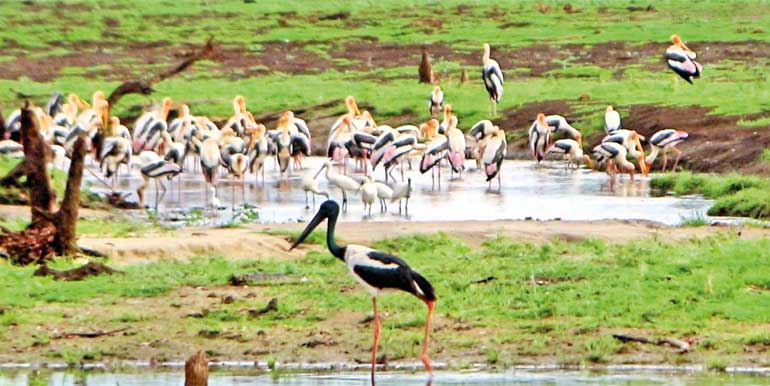
By Srilal Miththapala
The decision to visit the park was made spontaneously without much planning. Since I had not been to the Uda Walawe National Park (UWNP) for a few months, on the spur of the moment I thought of making a quick visit to the park.
I phoned up my one-time colleague and friend Ashoka, who is currently conducting studies on male elephant behaviour at the UWNP, and coincidentally he told me that he was doing some field work there. Since we also had not met up for some time, I immediately called up the Department of Wild Life Conservation (DWLC) to check the availability of the park bungalows. I was very lucky that the best bungalow in the park, Thimbiriyamankada, which had been under repairs and refurbishment for quite a while, had just been completed and released for occupation. So I grabbed the opportunity in booking the bungalow for occupation the next day itself, but struck a blind wall with the malfunctioning and temperamental DWC online booking system.
Realising my predicament, the helpful senior staff at the DWC came to my rescue, which enabled me to send my driver immediately to Battaramulla to make the booking in person. So here I was, having circumvented quite a few obstacles, happy with permit in-hand for occupation, all done within 36 hours.
Hastily I stocked up the provisions from the supermarket, loaded everything, together with the other usual essential paraphernalia for a trip to the jungle, such as cameras, tripods, binoculars, spotlights, torches, etc. and was on the road the next day by 5 a.m. (for those unfamiliar with the park bungalows, they are self-catering units with mostly dorm-type sleeping, which can accommodate up to 10 adults, having only the very basic comforts, together with bungalow keeper cum cook, no electricity with only solar lighting for three hours in the night). With a quick breakfast stop en-route I was at Uda Walawe at my trusted jeep service providers’ place by 9 a.m.
I entered the park around 10 a.m. ‘armed’ with a young rookie tracker, just one month into the job. When he realised that I was quite knowledgeable about wildlife and the park, the poor guy was thrilled and bombarded me with questions. He apparently had been given little or no training and was very eager to learn. What a sad situation that there is no proper training for these new trackers. A far cry from the rigorous training that guides and trackers in some of the African destinations undergo. I am aware that they have to not only know the park and animals and their behaviour, but also have to learn the basics about photography, botany and environment management!
The initial ‘rounds’ in the park, whiling away the time until 12 noon to check into the bungalow was most satisfying, with UWNP delivering its usual good sightings of elephants at close quarters. There is no doubt that UWNP is an ‘elephant wildlife park’. My initial research work in 2001/02, subsequent extensive studies by Dr. Shermin de Silva (de Silva et al. 2011) and my friend Ashoka Ranjeewa have shown that the park may be having over 1,000 elephants, the highest density of elephants in any wildlife park in Sri Lanka. So yes, Uda Walawe has earned a name for its elephants, to be seen in abundance even in the mid-day sun.
But there is a darker side to this burgeoning population and the fame it is bringing to this park. While the tourists flock and gaze in awe at these giant pachyderms at close quarters, affording unique photo opportunities even to a novice with a camera phone, there is something seriously wrong going on behind the scenes. The elephants of Uda Walawe National Park are slowly starving to death. Period. The very large population of elephants, hemmed into the park, with additional animals being translocated from other areas into the park, has caused the carrying capacity of the park to be stretched to the limits.
Recently Sri Lanka’s foremost elephant researcher Dr. Prithiviraj Fernando highlighted this issue. “Most parks are poor elephant habitats,” he said, adding that there is also the problem of the park’s carrying capacity, which makes it difficult even for the elephants already inside the park when elephants from outside the park’s boundaries are forcibly added to the population.
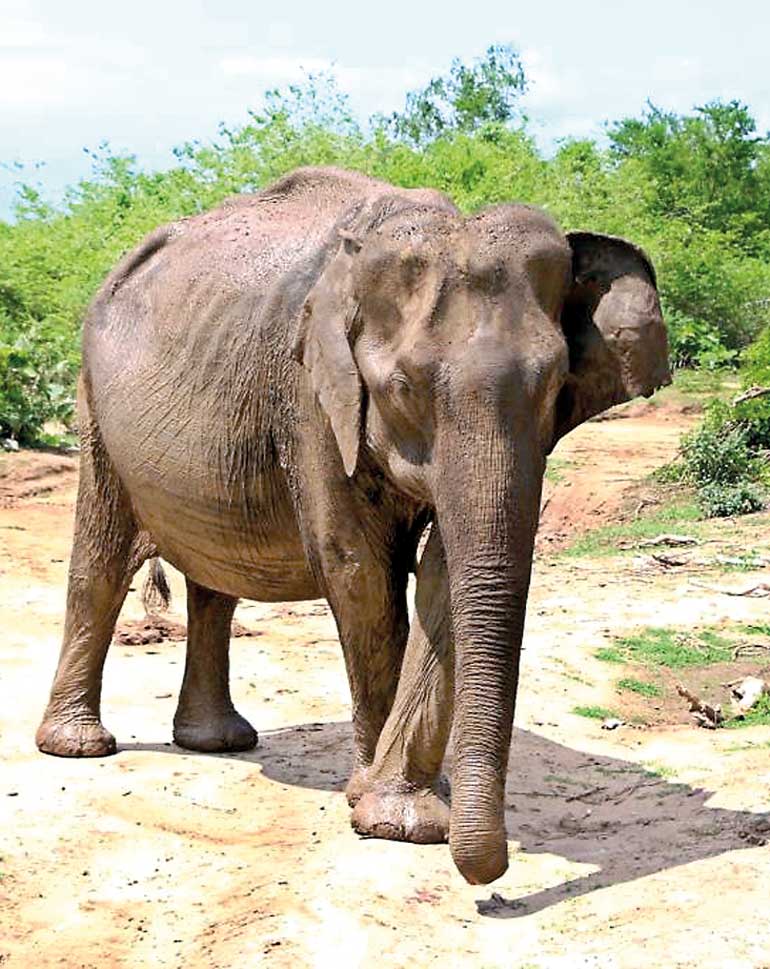
“Even elephants that were protected within the parks are now suffering because of the additional population we are pushing in. This is a major issue from a conservation perspective and has still not been realised.”
I myself saw this first hand, where every adult female in each herd seemed to be in poor body condition and malnourished. In many instances, one can see the ribs protruding in their emaciated bodies. The males seem to be relatively better off, perhaps because being primarily solitary, they can range further in search of better habitat.
I slowly made my way to the Thimbiriyamankada bungalow where Ashoka was to rendezvous with me (he had already entered the park at 6 a.m. to do some field work). The bungalow was in pristine condition after the rehab, and I was the first visitor after the closure. It was a strange feeling, going into the usually rustic and somewhat ramshackle bungalow we were used to, now shiny and smelling of fresh paint… and the bathrooms really worked!
Unfortunately due to the prevailing drought the water level of the tank had gone down dramatically and the scenery from the upper deck, though still nice, was not the same without the water. The number of water birds and raptors usually seen in abundance from the deck, were also scarce. I also wondered where all the crocodiles that habitated the water hole would have gone to. This area had some of the largest mugger crocs in the park, some who had been translocated many years ago from the notorious Ahungalle ‘zoo’, when it was raided and closed down by the DWC.
The bungalow keeper, always quick with anecdotes, told me that while the bungalow was being repaired some of the workmen had gone to bathe, when a crocodile had attacked them. The leg of the man apparently had to be eventually amputated. (Of course these stories have to be taken with a pinch of salt, as very often they are laced with generous doses of exaggeration!)
Ashoka joined me in about an hour, and after a scrumptious meal of red rice, dry fish, dhal, and potato curry, finished off with curd and treacle, we were ready for the evening drive. (Whatever wild stories the bungalow keepers tell, there is nothing on earth to beat their cooking. Maybe the atmosphere of the place, deep in the jungle, away from all human kind, surrounded by nature, adds to the taste.)
Ashoka had already done some good reconnaissance in the morning and suggested we drive right across the park to the eastern part to the Mau-Ara (river), where most of the elephants seem to be congregating. (The Thimbiriyamankada bungalow is situated more towards the western end of park.) Hence this meant that it was an hour-long drive, on bumpy four-wheel drive roads, to get to Mau-Ara, but it was worth it.
There were many elephants of course, and two big males came right up to our parked jeep and decided that they wanted to eat the leaves of the big tree under which we had parked. The bigger of the two was reaching out to the higher branches to try and pull a big branch down. Unable to reverse out we had to wait patiently, and hope that the branch would not come crashing down on us. Well it did come down with resounding crash, but thankfully it fell in front of the jeep and we enjoyed a grandstand view of both of them chomping on the branch.
There were many other jeeps that came with cartloads of chattering Chinese tourists. They just stopped for a few minutes, took photographs and left, while we spent more than 40 minutes observing their behaviour and antics. We saw the clear hierarchical structure, where the younger male was very wary of the bigger male, and was always subservient. Male elephants live a solitary life, and are moved out of the herd when they reach maturity. Young males often form bonds with a larger male, tagging along with him, learning the tricks of the trade, somewhat like an apprentice.
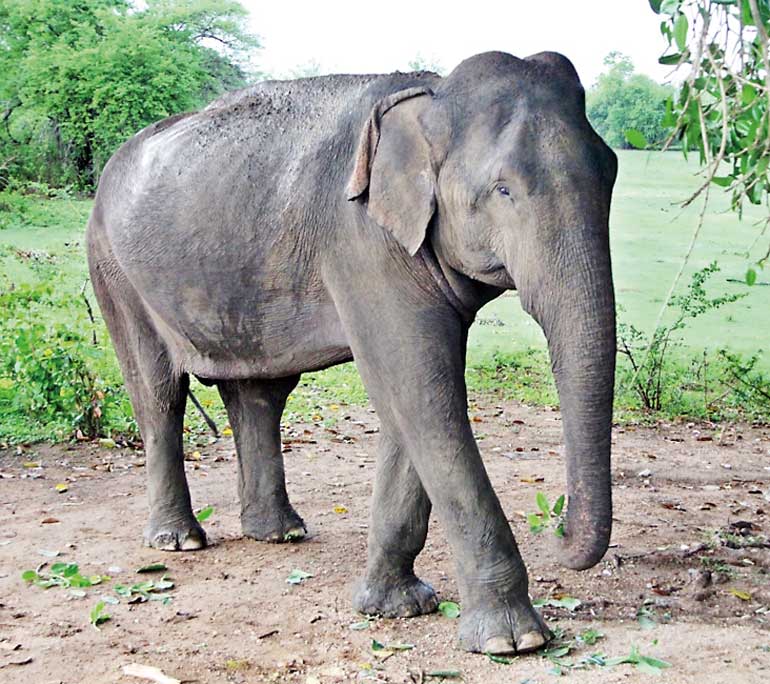
After a while they moved off, and we also drove along the dried river bed. Manju, our veteran jeep driver, who knows more about tracking animals than half of the DWC official trackers, suddenly drove around back on to a narrow road, sensing that the two males may have crossed there. And yes, there they were, both of them on the middle of the road munching on another large branch they had felled.
As we stopped our vehicle, the big male suddenly started walking towards us, carrying a branch in his trunk. As he came closer we realised that he had no intention whatsoever of stopping or moving to a side. His gait was measured and determined. After a quick hushed consultation, we decided to reverse the jeep slowly. (Now reversing a jeep with an oncoming angry elephant is usually not recommended. The sound of the engine suddenly starting can anger it more. Elephants can run at quite a nip, and can easily out run a reversing jeep.) With some experience in interacting with wild elephants under our belts, both Ashoka and I sensed that there was no anger in him. He just seemed to want to assert his authority and go his own way, without having to detour.
We were right. He just kept coming at us at a steady pace, almost at the same speed of the reversing jeep, followed by his able ‘apprentice’ a few meters behind. We spotted a small road by the side, and quickly reversed into it, moving off the path of the oncoming elephant. He calmly walked right in front of us, without even giving is a second glance, and went along his way.
After all these close encounters we decided to drive a little further along the river bed, and weren’t we in for a huge surprise. There were a herd of elephants munching placidly on the newly sprouting grass by the side of the road, and we stopped and watched them.
Ahead, in a small isolated water body, I could see a very large flock of painted storks. The road ahead was a very muddy and there was no way we could have gone any further, even with all the four-wheel drives at our disposal. So I zoomed in as much as I could through my camera to get a good picture of the painted storks when I suddenly spotted a rather larger looking stork amidst this gathering. Quickly we all focused our attention on this bird, the elephants all around us forgotten. We could not believe what we were seeing. It seemed to be a black-necked stork, a very rare species of bird. A quick reference to the bird guides confirmed that this really was a black-necked stork.
Some quick subsequent references indicated that the “black-necked stork (Ephippiorhynchus asiaticus) is a tall long-necked wading bird in the stork family”. It is a large bird, 129-150 cm (51-59 inches) tall, having a 230-centimetre (91 inches) wingspan. The average weight is around 4,100 grams (145 oz) (Ref Wiki). It is said to be the largest of all birds in Sri Lanka.
In Sri Lanka, the species is a rare breeding resident, with only four to eight breeding pairs seen in Ruhuna National Park. It is classified as Near Threatened (NT) on the IUCN Red List. A round of quick excited calls to specialist birders revealed that the species had never been recorded in UWNP ever before!
So both Ashoka and I were thrilled that we had stumbled across a rather unique sighting. Since visiting the UWNP from the early 1990s, for the first time ever a bird sighting superseded all the fantastic elephant sightings that I had. It was indeed a fitting finale to the evening of spectacular sightings of the wonderful wild life that this country is endowed with….or was there more to come? Pix courtesy Srilal Miththapala
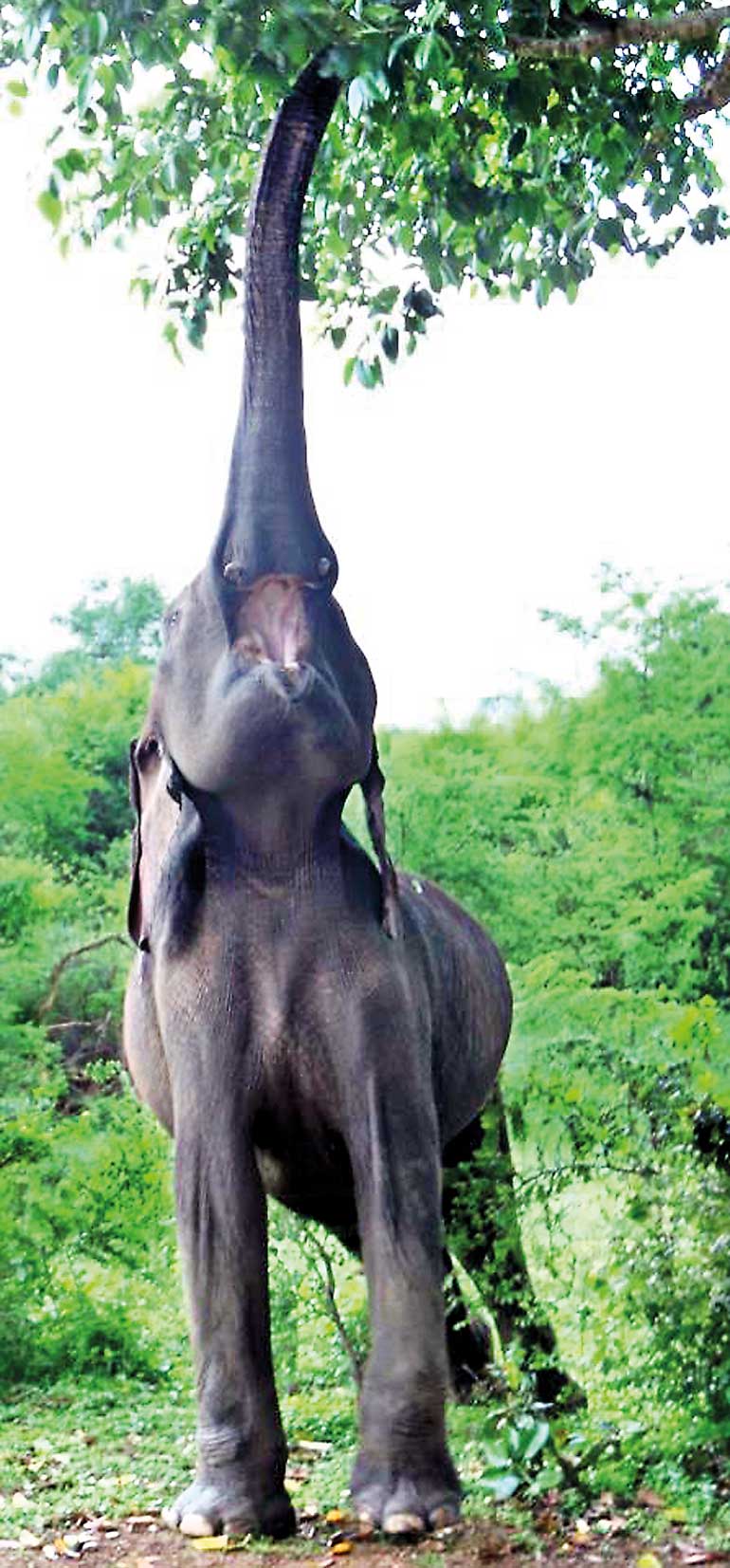
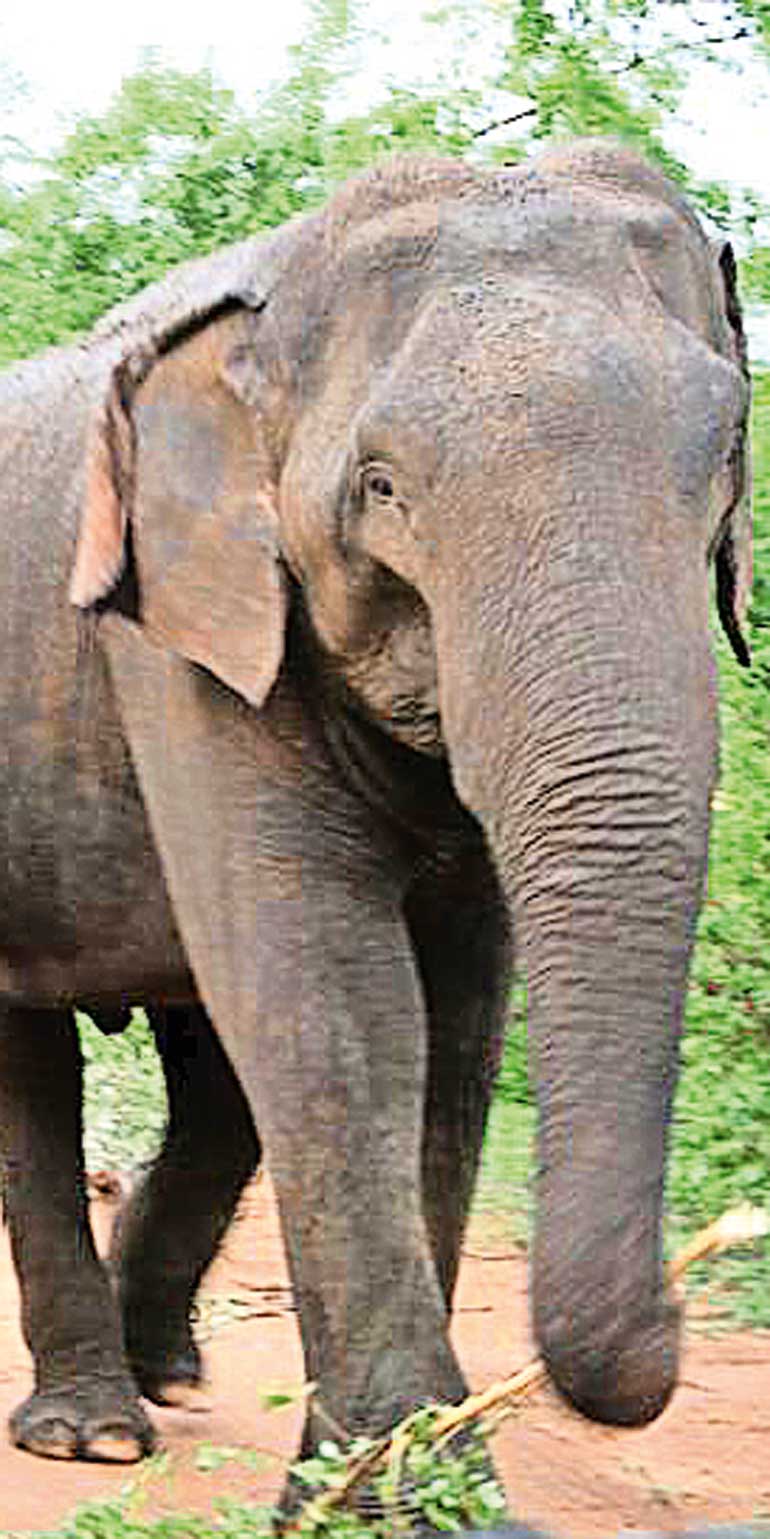
Discover Kapruka, the leading online shopping platform in Sri Lanka, where you can conveniently send Gifts and Flowers to your loved ones for any event including Valentine ’s Day. Explore a wide range of popular Shopping Categories on Kapruka, including Toys, Groceries, Electronics, Birthday Cakes, Fruits, Chocolates, Flower Bouquets, Clothing, Watches, Lingerie, Gift Sets and Jewellery. Also if you’re interested in selling with Kapruka, Partner Central by Kapruka is the best solution to start with. Moreover, through Kapruka Global Shop, you can also enjoy the convenience of purchasing products from renowned platforms like Amazon and eBay and have them delivered to Sri Lanka.
Discover Kapruka, the leading online shopping platform in Sri Lanka, where you can conveniently send Gifts and Flowers to your loved ones for any event including Valentine ’s Day. Explore a wide range of popular Shopping Categories on Kapruka, including Toys, Groceries, Electronics, Birthday Cakes, Fruits, Chocolates, Flower Bouquets, Clothing, Watches, Lingerie, Gift Sets and Jewellery. Also if you’re interested in selling with Kapruka, Partner Central by Kapruka is the best solution to start with. Moreover, through Kapruka Global Shop, you can also enjoy the convenience of purchasing products from renowned platforms like Amazon and eBay and have them delivered to Sri Lanka.